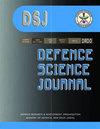应用于磁场传感器的无铅磁电材料的研制
IF 0.8
4区 工程技术
Q3 MULTIDISCIPLINARY SCIENCES
引用次数: 0
摘要
采用常规固相反应法合成了(100-x) Na0.5Bi0.5TiO3 (NBT)-(x) NiFe2O4 (NFO)(x = 0、20、40、60、80和100)复合材料。利用x射线衍射技术(XRD)对晶体结构进行了研究,XRD谱图的Rietveld分析证实了Fd- 3m和R3c空间群的立方对称(NFO)和菱形对称(NBT)共存。微观组织研究揭示了复合相组合及其互耦晶粒的形成。利用Image J软件计算复合材料各相的平均晶粒尺寸和面积百分比。磁化-磁场磁滞回线(M-H)显示复合材料的软磁行为随饱和磁化强度(MS)和矫顽力(HC)的变化而变化。(80) NFO - (20) NBT复合材料获得最大质谱(34 emu/g)和低HC (15 Oe)。极化电场(P-E)分析表明,(60)NBT-(40)NFO样品的最大饱和极化(PS)归因于导电NFO相产生的漏电流。基于磁电电压系数(αME)研究了铁氧体与铁电相的耦合。(80)NBT -(20)NFO样品的αME最大值为1.82 mV/cm-Oe,比之前发表的NBT-NFO复合材料高出近80%。这可以归因于晶粒的均匀分布,从形态学研究中可以看出,每个铁电相都被铁素体相包围。本文章由计算机程序翻译,如有差异,请以英文原文为准。
Development of Lead Free Magnetoelectric Materials for Magnetic Field Sensor applications
(100-x) Na0.5Bi0.5TiO3 (NBT)-(x) NiFe2O4 (NFO)(x = 0, 20, 40, 60, 80 and 100) composites are synthesized using conventional solid state reaction method. Crystal structure studies are performed by using X-ray Diffraction technique (XRD) and the Rietveld analysis of XRD patterns confirms the co-existence of cubic (NFO) and rhombohedral (NBT) symmetry with Fd- 3m and R3c space groups, respectively. Micro-structural study reveals the formation of combination of composite phases and its inter-coupling grains. The average grain sizes and area percentage of each phase for the composites are calculated using Image J software. The Magnetisation versus Magnetic field (M-H) hysteresis loops show soft magnetic behavior of composites with variation in Saturation magnetization (MS) and Coercivity (HC). A maximum MS (34 emu/g) and low HC (15 Oe) is obtained for (80) NFO - (20) NBT composite.The Polarization – Electric field (P-E) analysis shows that the maximum saturation polarization (PS) is obtained for (60)NBT-(40)NFO sample and is attributed to the leakage current generated by conductive NFO phase. The coupling between the ferrite and ferroelectric phase is studied based on the magnetoelectric voltage coefficient(αME). The maximum (αME) of 1.82 mV/cm-Oe is obtained for (80)NBT -(20)NFO sample and this is almost 80% higher than the previously published literature on NBT-NFO composites. This can be attributed to the uniform distribution of grains with each ferroelectric phase surrounded by ferrite phase as shown in the morphological study.
求助全文
通过发布文献求助,成功后即可免费获取论文全文。
去求助
来源期刊

Defence Science Journal
综合性期刊-综合性期刊
CiteScore
1.80
自引率
11.10%
发文量
69
审稿时长
7.5 months
期刊介绍:
Defence Science Journal is a peer-reviewed, multidisciplinary research journal in the area of defence science and technology. Journal feature recent progresses made in the field of defence/military support system and new findings/breakthroughs, etc. Major subject fields covered include: aeronautics, armaments, combat vehicles and engineering, biomedical sciences, computer sciences, electronics, material sciences, missiles, naval systems, etc.
 求助内容:
求助内容: 应助结果提醒方式:
应助结果提醒方式:


